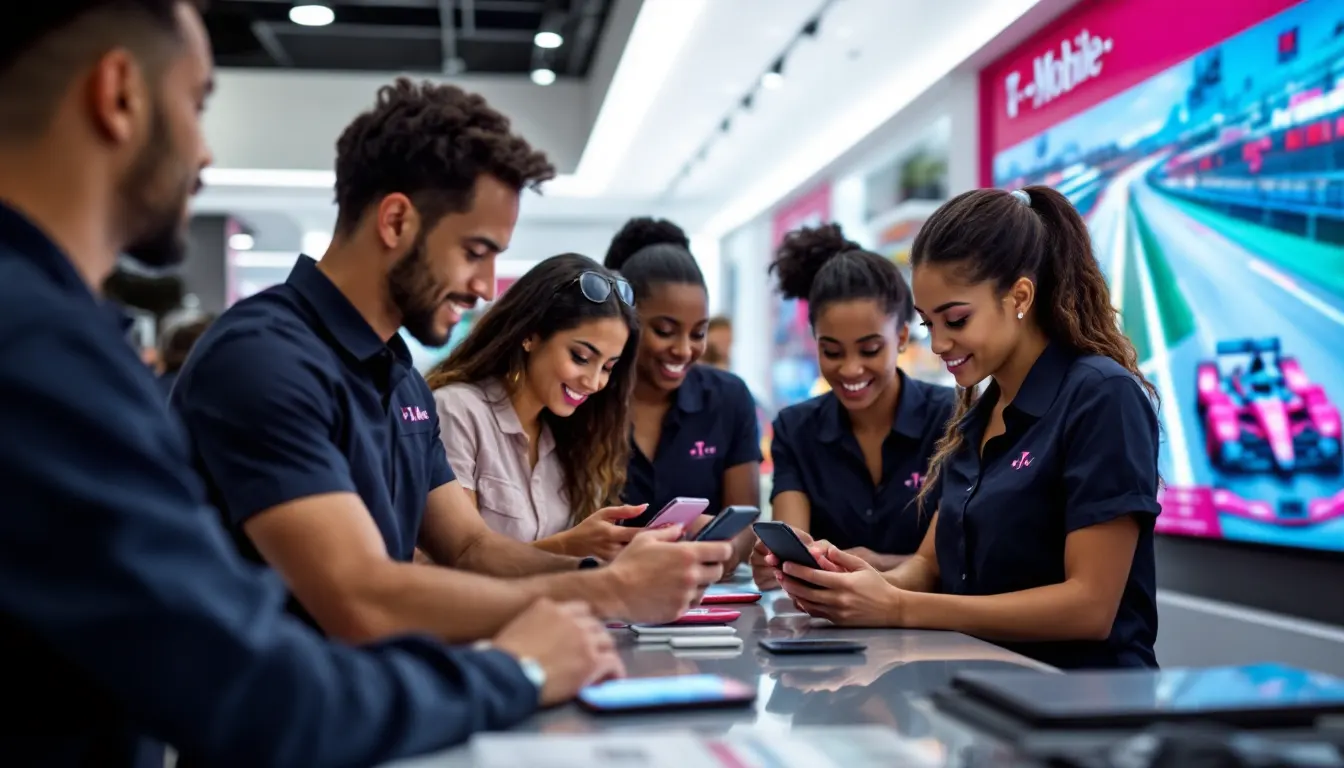Why T-Mobile’s ‘15-Minute Switch’ Reshapes US Carrier Competition

Switching wireless carriers in the US often drags on for hours or days, frustrating millions. T-Mobile just rewrote that script with its new “15 Minutes to Better” program, enabling customers to switch carriers in just 15 minutes nationwide.
T-Mobile CEO Srini Gopalan introduced this initiative alongside their high-profile Formula 1 sponsorship, including the Las Vegas Grand Prix, linking brand visibility with operational overhaul. But this isn’t just about marketing or incremental convenience—it’s about removing a critical bottleneck in customer migration.
The real leverage is in rebuilding legacy switching processes into streamlined, automated systems that cut the friction of switching carriers, creating a competitive moat that others cannot easily replicate.
“Speed and simplicity win customers—and build unshakable advantage.”
Why Switching Carriers Isn’t Just a Customer Service Problem
The common view credits slow carrier switches to industry complexity and regulation. But that interpretation misses the deeper structural constraint: legacy system fragmentation. Carriers like Verizon and AT&T rely on cumbersome manual coordination across multiple platforms.
Automation in switching reduces human bottlenecks, but T-Mobile went further—it redesigned the entire process end to end. Unlike competitors who patch legacy systems, they built fresh API-driven workflows connecting carrier, billing, and network cores in a cohesive assembly line.
Process mapping pinpointed redundant manual steps, slashing switch time from hours or days to mere minutes. This constraint repositioning flips switching from a competitive weakness into a growth engine.
Behind the Scenes: How Formula 1 Sponsorship Amplifies Leverage
T-Mobile strategically paired the “15 Minutes to Better” launch with sponsoring the Las Vegas Grand Prix, reaching a high-value, tech-savvy audience. This isn’t sponsorship fluff—it’s a multiplier. Brand awareness fuels demand, but frictionless switching ensures demand converts without leak.
Unlike carriers that rely on costly advertising with uncertain returns, T-Mobile’s combo of high-visibility event partnership and operational leverage creates a flywheel. Each new customer attracted by global Formula 1 events hits a frictionless onboarding pipeline, reducing acquisition costs and churn risks.
Strategic partnerships like this turn marketing spend from a cost center into a scalable asset, compounding returns across brand and backend operations.
What the 15-Minute Switch Means for the US Telecom Landscape
This targeted operational revamp changes the core constraint in US telecom: customer lock-in through painful switching. T-Mobile removes the pain point, forcing competitors into costly catch-up or risk accelerated churn.
Operators who cling to legacy switching infrastructure—like Verizon and AT&T—face a systemic disadvantage. By reinventing the switching pipeline as a digital-first, programmable system, T-Mobile gains a durable moat that strengthens with scale.
Efficiency improvements here don’t just cut costs—they redefine what customer acquisition and retention mean in telecom.
Carriers that fail to rearchitect switching processes lose market share automatically. System design wins where marketing alone falls short.
Who Should Watch and What’s Next?
US regional carriers and MVNOs must re-examine switching barriers as a strategic frontier, not just a backend nuisance. Telecom regulators will also face pressure to standardize interfaces and reduce friction nationally.
Globally, markets with fragmented carrier ecosystems can learn from T-Mobile’s playbook to unlock customer mobility—a key demand driver. Expect new entrants to replicate or leapfrog with superior digital switching systems.
“Removing switching friction is the fastest way to flip telecom from stale to scalable.”
Related Tools & Resources
T-Mobile’s success in reengineering switching processes underlines the power of clear, documented workflows. For organizations looking to streamline operations and cut friction, platforms like Copla offer the tools to map and manage critical procedures effectively. Embracing such process clarity can be the key to unlocking efficiency and competitive advantage. Learn more about Copla →
Full Transparency: Some links in this article are affiliate partnerships. If you find value in the tools we recommend and decide to try them, we may earn a commission at no extra cost to you. We only recommend tools that align with the strategic thinking we share here. Think of it as supporting independent business analysis while discovering leverage in your own operations.
Frequently Asked Questions
How quickly can customers switch wireless carriers in the US with T-Mobile's new program?
T-Mobile's "15 Minutes to Better" program enables customers to switch carriers nationwide in just 15 minutes, drastically reducing the typical switching time from hours or days.
What causes slow carrier switching processes in the US telecom industry?
Slow switching is mainly caused by legacy system fragmentation and manual coordination across multiple platforms by carriers like Verizon and AT&T, creating operational bottlenecks.
How does automation improve the process of switching wireless carriers?
Automation reduces human bottlenecks by redesigning the switching process with API-driven workflows connecting carriers, billing, and network systems, slashing switch times from days to minutes.
What strategic advantages does T-Mobile gain from its ‘15-Minute Switch’ program?
T-Mobile gains a durable competitive moat by providing frictionless switching, reducing acquisition costs and churn risk, while converting brand awareness from Formula 1 sponsorship into scalable customer growth.
How does T-Mobile’s Formula 1 sponsorship relate to its switching program?
T-Mobile pairs its "15 Minutes to Better" launch with high-visibility Formula 1 events like the Las Vegas Grand Prix to reach tech-savvy audiences and create a scalable marketing and operational flywheel.
Why is switching friction important in telecom customer acquisition?
Removing switching friction eliminates a major customer pain point, enabling faster customer migration, lowering churn, and forcing competitors to invest heavily to keep up or lose market share.
What should regional carriers and MVNOs focus on regarding carrier switching?
Regional carriers and MVNOs should treat switching barriers as strategic challenges requiring digital-first, integrated systems to reduce friction and enhance customer mobility.
What role do telecom regulators have in improving carrier switching?
Regulators will face pressure to standardize switching interfaces nationally, aiming to reduce friction and enable smoother carrier transitions for consumers.

